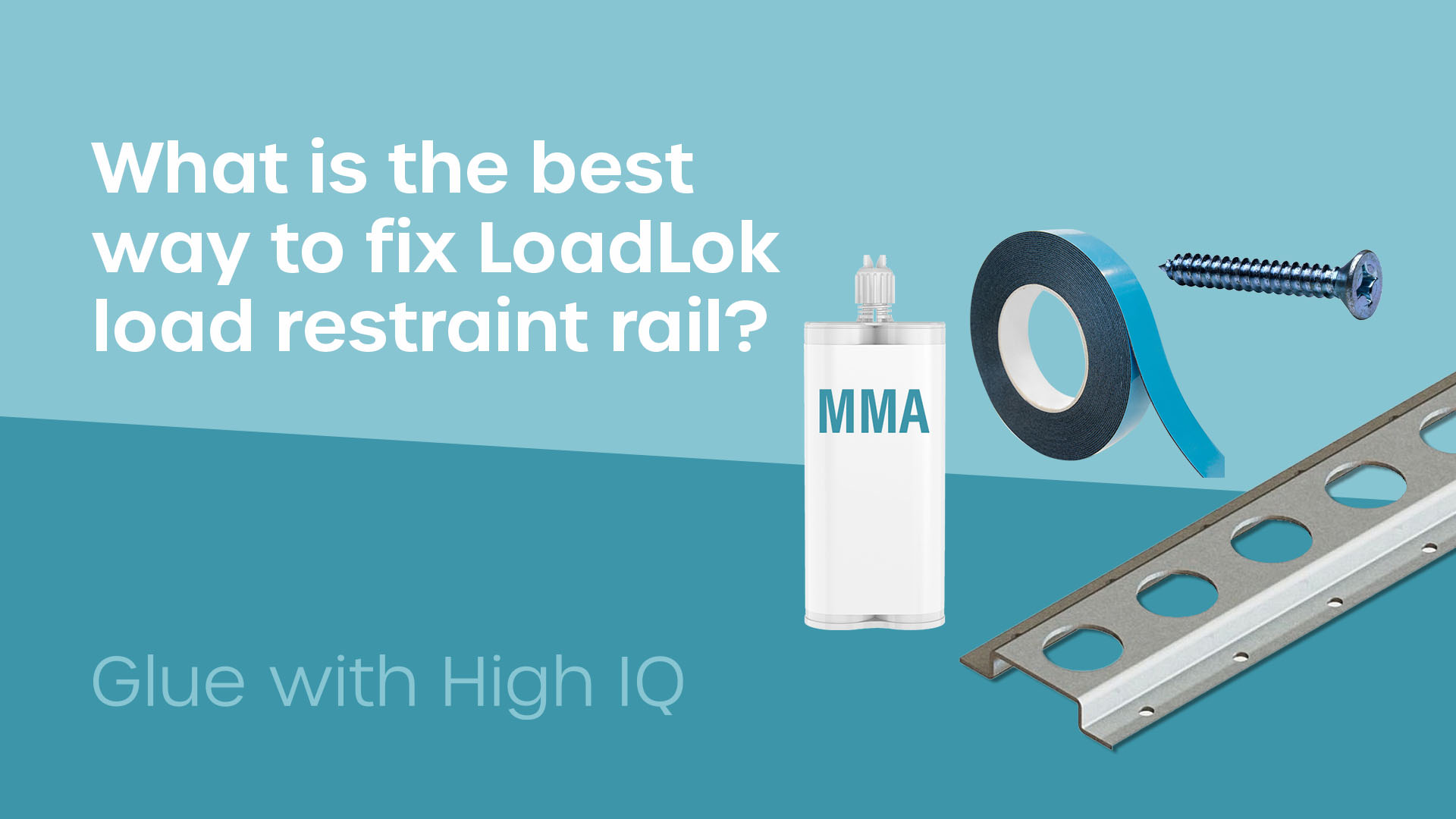Many customers have asked us about fixing LoadLok, so in this blog we’ll cover the various options as well as the pros and cons that come with them.
The conventional way to fix load restraint rail, especially into a plywood sidewall is to mechanically fix with screws, the process for this is simple – measure, mark, drill and screw. As a manufacturer and supplier of adhesives and tapes – we look at the other alternatives.
Pro’s:
- Simple process can be done by low skilled workers.
- Proven track record.
- Easy to remove and replace.
Con’s
- Every hole drilled into the sidewall weakens it.
- Latest composite panels do not offer good fixity for mechanical fasteners.
- Fridge body composites require installation of fixing plates within the sidewall adding weight, cost and time.
- A standard plywood sidewall without anchor plates installed will be able to hold 250-300Kg before the screws are stripped from the plywood.
- HSE concerns through noise, smell and vibration from tooling/machinery.
So, can I use an acrylic tape for this application? The answer is yes, you can.
Pro’s:
- Fast: once the track and sidewall have been cleaned and activated, the process for applying LoadLok track is quick and it holds itself while the tape builds up to 100% adhesion (3 days).
- Less HSE concerns, aside from cleaners and activators – there are no dangerous chemicals to deal with.
- Without any mechanical fasteners, the strength is between 100-300Kg – good holding power in conjunction with some mechanical fasteners.
- No cleaning up excess adhesive etc.
Con’s:
- Tapes require a very clean environment, surface prep is critical and with many tapes this is a 2 step process (cleaning and activating).
- LoadLok track is never perfectly flat which means the bond area is often less than 50% of the tape width.
- You still have to use mechanical fastenings with it so the process advantages are limited.
- Variations in strength due to the variations in the bond area of the tape.
Many truck builders are now using adhesives for bonding LoadLok on, this combined with the new LoadLok track offers a very strong and aesthetically pleasing system.
Pro’s:
- Very strong: up to 1000Kg pull off force – adhesive strength will match that of the sidewall and Loadlok making it a robust system.
- Some brands will conform to the shape of the LoadLok and therefore unaffected if the track is not perfectly flat.
- High grab: some can hold themselves while the adhesive cures.
- Lowest overall cost option.
- Fastest overall option, typically it takes 30 minutes to mechanically fasten one side of a 13.6M trailer whereas with adhesive, it can take 15 minutes. However, you still need to factor in 5 minutes for the clean-up operation afterwards.
- Loadlok now offer a track with a limited number of holes making bonded LoadLok very aesthetically pleasing.
- Bonded Loadlok will flex and move with the vehicle, also will allow expansion and contraction.
Con’s:
- Loadlok and sidewall need to be cleaned before bonding.
- Excess adhesive needs to be cleaned afterwards.
- Adhesive takes days to fully cure although is usable after 48 hours.
- Requires a more skilled operator to prevent mess.
Are you confused about which solution is best for you? Feel free to contact our team of specialists for some non-biased advice.

